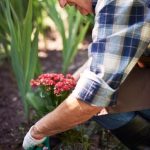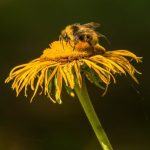The Girl Scout Junior Gardener Badge is a fantastic opportunity for young girls to explore the world of gardening while earning recognition for their efforts. Engaging in gardening activities not only enhances the knowledge and skills of Junior Girl Scouts, but also promotes important values such as responsibility, patience, and environmental stewardship. In this article, we will provide a variety of girl scout junior gardener badge ideas to inspire and guide troop leaders and scouts on their gardening journey.
Gardening can offer a plethora of benefits to young girls, including boosting their confidence, teaching them valuable life skills, and connecting them with nature. By working towards the Girl Scout Junior Gardener Badge, scouts have the chance to develop a deeper appreciation for the environment and learn how to nurture living things. Through hands-on experiences in planting, caring for plants, and understanding ecosystems, girls can grow both personally and intellectually while making a positive impact on their surroundings.
As troop leaders embark on the adventure of guiding Junior Girl Scouts through their gardening endeavors, it is essential to ensure a solid foundation is laid out. From selecting an appropriate location for gardening projects to acquiring the necessary tools and mastering basic techniques, getting started on the right foot is crucial.
With dedication and enthusiasm, scouts can not only earn their Gardener Badges but also cultivate a lifelong love for nature and sustainable practices that will benefit them well beyond their scouting years.
Getting Started
Choosing a Suitable Location
When starting the gardening journey with the Junior Girl Scouts, it is important to choose a suitable location for the garden. Look for an area that receives plenty of sunlight, has access to water, and is free from potential hazards. Whether it’s a small plot in the backyard or a few pots on a balcony, make sure the space is easily accessible for the girls to tend to their plants.
Gathering Essential Tools
To kickstart their gardening adventure, make sure the Junior Girl Scouts have the essential tools they need. Some basic tools include gloves to protect their hands, trowels for planting and digging, watering cans or hoses for watering plants, and hand pruners for maintaining their garden. Teaching them how to properly use these tools will not only help them with their gardening projects but also instill a sense of responsibility.
Learning Basic Gardening Techniques
Before diving into planting and caring for their garden, take some time to educate the Junior Girl Scouts on basic gardening techniques. Teach them about soil preparation, proper plant spacing, watering schedules, and how to identify common pests and diseases. By understanding these fundamental principles of gardening, the girls will be better equipped to nurture their plants and achieve success in earning their Girl Scout Junior Gardener Badges.
Planting Ideas
Planting a variety of plants and flowers is an exciting part of earning the Girl Scout Junior Gardener Badge. When choosing plants for your garden projects, consider options that are easy to grow, visually appealing, and educational for the young scouts. Some great ideas include sunflowers, zinnias, marigolds, and cherry tomatoes. These plants are not only beautiful but also relatively low maintenance, making them perfect for beginner gardeners.
Sunflowers are a popular choice among young gardeners due to their vibrant colors and impressive size. They are easy to grow from seeds and can quickly sprout into tall and cheerful blooms that can attract pollinators like bees and butterflies.
Zinnias are another fantastic option as they come in a variety of colors and shapes, adding a splash of brightness to any garden bed. Marigolds are known for their pest-repelling properties, making them a practical choice for organic gardening projects with the Junior Girl Scouts.
Cherry tomatoes are excellent plants for teaching kids about growing food and caring for edible crops. Watching these tiny tomatoes transform from green fruits to ripe red delicacies can be both fun and rewarding for the scouts.
Additionally, herbs like basil, mint, or chives can be fantastic additions to the garden as they are fragrant, useful in cooking activities, and relatively simple to maintain. By planting these diverse options, Junior Girl Scouts can explore the world of gardening while working towards earning their Gardener Badges.
| Plant Name | Description |
|---|---|
| Sunflowers | Vibrant colors and attractive to pollinators. |
| Zinnias | Colorful flowers available in various shades. |
| Marigolds | Pest-repelling properties and low maintenance. |
| Cherry Tomatoes | Easy-to-grow edible crop with educational value. |
Maintenance Tips
Maintaining a garden is a crucial aspect of earning the Girl Scout Junior Gardener Badge. To ensure the plants thrive throughout the growing season, proper care is essential. One of the most important tasks when it comes to plant maintenance is watering. Girl Scouts can learn how to check the soil moisture levels regularly and water their plants accordingly. Understanding the specific watering needs of different plants can help them develop a green thumb and cultivate healthy gardens.
In addition to watering, weeding is another essential maintenance task that Junior Girl Scouts should master. Weeds compete with plants for nutrients and resources, so regular weeding is necessary to keep the garden healthy. Girls can learn how to identify common weeds and safely remove them without harming their plants. This hands-on experience not only helps in maintaining a neat garden but also teaches valuable skills in plant care and attention to detail.
Pest control is another crucial aspect of maintaining a healthy garden. Girl Scouts can explore environmentally-friendly methods of pest management, such as handpicking pests off plants or using natural remedies like neem oil or garlic spray.
Learning about beneficial insects that act as natural predators against harmful pests can also be an educational experience for young gardeners. By understanding the delicate balance of nature within their gardens, Junior Girl Scouts can not only earn their Gardener Badges but also foster an appreciation for ecological systems and sustainable gardening practices.
| Plant Maintenance Tips | Description |
|---|---|
| Watering | Teach scouts how to check soil moisture levels and water plants accordingly. |
| Weeding | Show scouts how to identify weeds and safely remove them without harming plants. |
| Pest Control | Explore eco-friendly pest management methods and beneficial insects for natural pest control. |
Fun Projects
When it comes to earning their Girl Scout Junior Gardener Badge, the young scouts can embark on various fun and educational gardening projects. These projects not only teach the scouts about plants and nature but also foster creativity and teamwork. One exciting project idea is designing a butterfly garden. This project not only adds beauty to any outdoor space but also attracts pollinators like butterflies, which play a crucial role in plant reproduction.
To create a butterfly garden, the Junior Girl Scouts can follow these simple steps:
- Research and select plants that attract butterflies, such as milkweed, coneflowers, and butterfly bushes
- Design the layout of the garden, ensuring there are nectar-rich flowers for adult butterflies to feed on and host plants for caterpillars to munch on
- Plant the chosen flowers in a sunny location with good drainage and provide a water source like a shallow dish with pebbles for butterflies to drink from
Another rewarding project for earning their Gardener Badge is creating a herb garden. Herb gardens are not only practical but also delightful to cultivate. The scouts can learn about different culinary herbs, their uses in cooking, and how to care for them. Additionally, they can explore medicinal properties of herbs and even create homemade herbal remedies.
To start a herb garden as part of their Girl Scout activities:
- Select a sunny spot with well-drained soil or consider planting herbs in containers if space is limited
- Choose popular culinary herbs like basil, cilantro, mint, rosemary, and thyme or focus on medicinal herbs like lavender or chamomile
- Showcase their creativity by designing unique herb markers using recycled materials or craft supplies
By engaging in these creative gardening projects like designing a butterfly garden or creating a herb garden, the Junior Girl Scouts can not only earn their Gardener Badges but also develop valuable skills while fostering an appreciation for nature. These activities offer hands-on learning experiences that will surely leave a lasting impact on the young scouts’ lives.
Educational Opportunities
Gardening offers numerous educational opportunities for Girl Scout Junior Gardener Badge participants. Learning about plant life cycles, soil composition, and the vital role of pollinators can not only enhance their understanding of the natural world but also foster a sense of responsibility towards the environment. Here are some ideas to incorporate these educational aspects into the gardening projects:
- Plant Life Cycles: Teach the Junior Girl Scouts about the different stages of a plant’s life cycle, from seed germination to flowering and fruit production. Encourage them to observe and document these stages in their own garden and discuss how each phase contributes to the plant’s overall growth.
- Soil Composition: Explore the importance of healthy soil for plant growth by conducting simple soil tests with the Girl Scout Junior Gardeners. Help them understand the role of nutrients, pH levels, and organic matter in maintaining fertile soil for their plants.
- Importance of Pollinators: Educate the girls about the essential role that pollinators, such as bees, butterflies, and birds, play in plant reproduction. Discuss how pollination helps produce fruits and seeds, and explore ways to attract pollinators to their garden through native plants and habitat enhancements.
By delving into these educational aspects of gardening, Girl Scout Junior Gardener Badge participants can develop a deeper appreciation for nature and a better understanding of how ecosystems function. These learning experiences not only contribute to their badge requirements but also lay a foundation for future environmental stewardship.
Moreover, incorporating hands-on activities like planting seeds, observing plant growth, and conducting experiments can make learning about plant life cycles, soil composition, and pollination more engaging and memorable for the girls. Encourage them to ask questions, make predictions, and record their observations in a gardening journal or logbook to track their progress throughout the season.
Incorporating games, quizzes, or interactive lessons related to these topics can further enhance the educational value of gardening activities for Girl Scout Junior Gardener Badge earners. By making learning fun and exciting, troop leaders can inspire curiosity and instill a love for science and nature in young minds while working towards earning their badges.
Community Involvement
Community Gardening Projects
One fantastic way to involve Junior Girl Scouts in community gardening projects is to collaborate with local organizations or schools that have community gardens. These projects not only allow the girls to learn about gardening but also fosters a sense of community and teamwork. They can participate in planting, weeding, watering, and harvesting alongside other community members, gaining valuable hands-on experience while making a positive impact.
Organizing a Plant Sale
Another exciting opportunity for Junior Girl Scouts to engage in their gardening endeavors is by organizing a plant sale. This activity not only allows them to showcase their hard work and skills but also provides an excellent fundraising opportunity for their troop.
The girls can grow plants from seeds or cuttings, nurture them into healthy seedlings or plants, and then sell them at a local event or market. This teaches them valuable lessons in entrepreneurship and responsibility while raising funds for future scouting activities.
Promoting Sustainability
While participating in community gardening projects or organizing plant sales, it is essential to emphasize the importance of sustainability and environmental stewardship to the Junior Girl Scouts. Educate them on eco-friendly gardening practices like composting, water conservation, and using natural methods for pest control.
By instilling these values early on, the girls can develop a deeper appreciation for nature and understand their role in preserving our planet’s health for future generations. Engaging in sustainable practices will not only benefit their Gardener Badge journey but also contribute positively to their overall development as responsible global citizens.
Badge Completion
The Girl Scout Junior Gardener Badge offers a wonderful opportunity for young girls to explore the world of gardening and gain valuable skills along the way. By documenting their gardening activities, the Junior Girl Scouts can fulfill the badge requirements and celebrate their achievements in a meaningful manner. Keeping track of their progress not only helps them meet the specific criteria but also allows them to reflect on their growth throughout the process.
One creative idea for documenting gardening activities is to create a scrapbook or journal where the Junior Girl Scouts can record their experiences, observations, and learnings. They can include photos of their plants at different stages, notes on care routines they have followed, and any challenges they have encountered and overcome. This hands-on approach not only serves as a tangible record of their journey but also encourages them to be more mindful and reflective gardeners.
Another fun way for the Junior Girl Scouts to document their gardening activities is by creating a digital presentation or slideshow. They can use platforms like Canva or Google Slides to showcase the progress of their plants, share interesting facts about the species they have grown, and highlight any community engagement initiatives they have undertaken.
This modern approach not only satisfies badge requirements but also hones their technological skills while presenting their gardening accomplishments in an engaging format. By documenting their gardening activities creatively, the Junior Girl Scouts not only earn their Gardener Badges but also develop essential skills that will benefit them in various aspects of life.
Frequently Asked Questions
Is There a Girl Scout Badge for Gardening?
There is indeed a Girl Scout badge for gardening called the “Outdoor Art Explorer” badge. This badge encourages Girl Scouts to learn about plants, gardens, and how to care for them. It helps girls connect with nature and understand the importance of environmental stewardship.
Is There a Scout Badge for Gardening?
In scouting organizations like the Boy Scouts and Girl Scouts, there are badges related to gardening. These badges aim to teach young scouts about the wonders of nature, plants, and sustainability. Gardening badges offer valuable lessons in responsibility, patience, and caring for the environment.
Is There a Cooking Badge in Girl Scouts?
The Girl Scouts offer various cooking-related badges for different age groups. For example, younger Girl Scouts can earn the “Snacks,” “Simple Meals,” or “New Cuisines” badges by learning basic cooking skills and trying new recipes.
Older scouts can explore more advanced culinary concepts through badges like “Outdoor Cooking” or “Locavore.” These cooking badges help girls develop essential life skills while fostering creativity and independence in the kitchen.

Welcome to my gardening blog! I am passionate about plants and enjoy sharing my knowledge and experiences with others. In this blog, I will write about everything related to gardening, from tips on how to get started to updates on my own garden projects.





